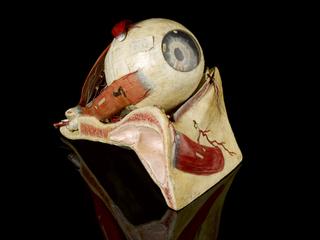
Time register, or ‘Pegging Clock’
- Made:
- 1900-1939 in Darlington






A Peg Clock Point, electro-mechanical, with two remote switches, by Cox-Walkers of Darlington, used to record warder patrols at Sussex Lunatic Asylum/Brighton County Borough Asylum, 1900-1939.
A system of ‘tell–tale clocks’ was installed in Sussex Lunatic Asylum in 1890. They checked the timings of night patrols. There were 400 patients when the Asylum opened in 1859. Doors to the wards and corridors were locked. Attendants patrolled the male and female sleeping areas. The attendant operated the mechanism with a key. This made an electrical contact with the master control in the Hall Porter’s office. The master control was geared to a clock mechanism with a rotating drum. Graph paper, marked to coincide with an ordinary time clock, was placed over this drum every night. Pen and ink tracers showed the exact time and location a key was inserted. It showed staff were alert and where they should be. It also showed they were safe from attack.
This system is symbolic of the rules, regulations and surveillance routines in large Victorian asylums. It also shows how staff as well as patients were rigidly controlled by institutional life. This contrasts with the flexible care now offered by psychiatric nurses in the community.
Details
- Category:
- Psychology, Psychiatry & Anthropometry
- Object Number:
- 1996-271/26
- Measurements:
-
overall: 320 mm x 790 mm x 350 mm,
overall - weight: 25.8 kg
- type:
- time register
- credit:
- Princess Royal Hospital




